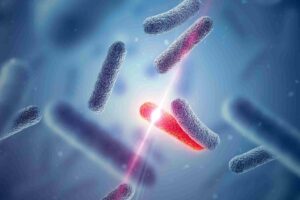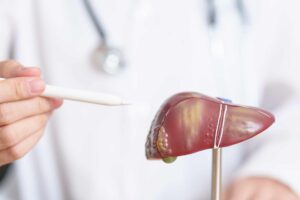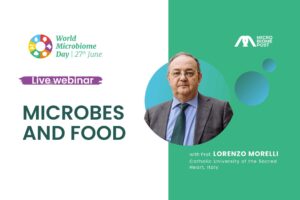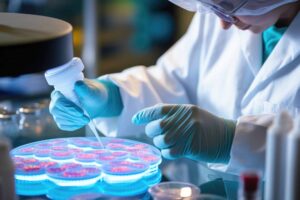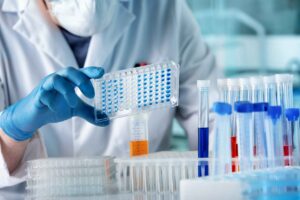What is already known on this topic
People who consume a diet rich in red meat tend to have an increased risk of developing cardiovascular diseases such as heart attack and stroke. This may be in part because the gut microbiota produces an atherosclerosis- and blood clot-promoting molecule — called trimethylamine-N-oxide (TMAO) — from L-carnitine, a nutrient abundant in red meat. Dietary carnitine is converted into TMAO in the gut and an intermediary metabolite in this process is a molecule called gamma-butyrobetaine, or γBB. However, little is known about the link between red meat ingestion and cardiovascular disease risk, as well as the microbial genes responsible for the production of TMAO.
What this research adds
By analyzing samples and clinical data from nearly 3,000 people with cardiovascular disease, researchers found that higher levels of γBB were associated with cardiovascular disease and adverse disease outcomes, including death. Working in mice, the team found that introducing a bacterium called Emergencia timonensis, which is involved in the transformation of γBB to TMA/TMAO, leads to high TMAO levels and increased risk of blot clots. The expression of a group of six microbial genes called the gbu (gamma-butyrobetaine utilization) gene cluster increased in the presence of γBB. Four genes in the cluster appeared to be key for the conversion of γBB to TMA/TMAO.
Conclusions
The findings provide new insights into how a diet rich in red meat increases risk for cardiovascular disease, and they may help to develop new therapeutic targets to curb this risk.
People who consume a diet rich in red meat tend to have an increased risk of developing cardiovascular diseases such as heart attack and stroke. Researchers have now revealed that as gut microbes digest a nutrient present in red meat, they produce a molecule that increases the risk of heart disease and stroke.
The findings, published in Nature Microbiology, provide new insights into how a diet rich in red meat increases risk for cardiovascular disease. They may also have applications for treatment, the researchers say. “This discovery helps point us towards new therapeutic targets to prevent or reduce diet-associated cardiovascular disease risk,” says study senior author Stanley Hazen at Cleveland Clinic.
Gut microbes transform L-carnitine, a nutrient abundant in red meat and other animal products, into trimethylamine-N-oxide (TMAO) — an atherosclerosis- and blood clot-promoting molecule. Dietary carnitine is converted into TMAO through a process that involves two microbes, including a bacterium called Emergencia timonensis. The intermediary metabolite in this process is a molecule called gamma-butyrobetaine, or γBB. However, little is known about the link between red meat ingestion and cardiovascular disease risk, as well as the microbial genes responsible for the production of TMAO.
To address some of these questions, Hazen and his colleagues set out to analyze samples and clinical data collected from nearly 3,000 people with cardiovascular disease.
Disease outcome
First, the researchers studied the link between blood γBB levels and disease outcomes. They found that higher levels of γBB were associated with cardiovascular disease and adverse outcomes, including death.
Then, the researchers turned to germ-free mice colonized with defined synthetic microbial communities. Introducing E. timonensis, which is known to be involved in the transformation of γBB to TMA/TMAO, into the animals led to high TMAO levels and increased risk of blot clots, the team found.
By analyzing the genes expressed by E. timonensis, the researchers identified a group of six microbial genes, which they dubbed the gbu (gamma-butyrobetaine utilization) gene cluster. The expression of these genes increased in response to γBB, and four genes in the cluster — gbuA, gbuB, gbuC and gbuE — appeared to be key for the conversion of γBB to TMA/TMAO.
Clinical approach
Finally, the team analyzed stool samples from 113 people enrolled in a clinical study that involved a randomized diet. They found that the abundance of gbuA in a person’s stool was linked to blood TMAO levels and a diet rich in red meat.
“Patients who transitioned to a non-meat diet went on to exhibit reduced gut microbial levels of gbuA,” Hazen says. “Taken together, this suggests that dietary modifications may help reduce diet- and TMAO- associated cardiovascular disease risk.”
The findings uncover the microbial gene cluster responsible for the transformation of dietary carnitine into γBB and TMA/TMAO, and how it could contribute to cardiovascular disease risk. The role of the gbu gene cluster, Hazen says, “may be worth exploring as a potential therapeutic target” to curb this risk.



